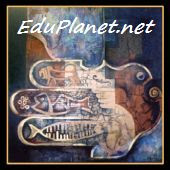"My big fat Amaraic Wedding" | |
"My big fat Amaraic Wedding" by Jay BushinskyInternational Jerusalem Post April 29 - May 5, 2005 http://groups.yahoo.com/group/HaTsafon There is no better proof of modern Aramaic's vitality than the spectacular weddings held by the Jewish "Nash Didan" community, which hails from the remote foothills of the Caucasus Mountains. "Nash Didan" means "Our People" and its distinctive music and dance have been immortalized by Nissan Aviv, a brilliant composer and orchestrator who arrived in Israel 55 years ago during the peak of the "Nash Didan" immigration, and has devoted his life to preserving and continuing this culture ever since. Soon after the late Naomi Shemer's Yerushalayim Shel Zahav ("Jerusalem of Gold") became a hit on the eve of the Six Day War, Aviv obtained her permission to render it in Aramaic. Translated as Yerushalayim Ai Dheba, it is a beloved staple at "Nash Didan" weddings. Aviv was born in Urmia, an ancient city in Iranian Azerbaijan. "We spoke Aramaic at home, Turkish on the street and learned Persian at school," he said. "I knew a fair amount of Hebrew when we came to Israel because it was taught in our Jewish schools. And partly thanks to my Aramaic, I was able to speak like a sabra in no time." Aviv's lyrics are written in modern Aramaic and his songs not only draw audiences from the various Aramaic-speaking communities in Israel - located in Holon, Givatayim and Jerusalem -- but also are played on the Aramaic (or Syriac) radio and TV stations in Australia, Canada and Sweden. "Jerusalem of Gold is as popular abroad is it is here," he said. Aviv's music is based on three instruments: a drum known as a dair'a, a five-stringed instrument plucked like a balalaika or mandolin known as a kar kavkazi and a Central Asian version of the cello known as a kamanncha. Aviv has won the unstinting acclaim of one of Israel's leading experts in cognate Semitic languages, Hezy Mutzafi, who speaks half a dozen of the Aramaic and Syriac dialects fluently. Noting that the "Nash Didan" community consists of "only a few thousand" Israelis (its members constitute a relatively small percentage of an influx of nearly 200,000 immigrants from Iran, Turkey and the Caucasus), Mutzafi points out that it is also one of the least known Jewish ethnic groups. "Its focus is on culture, folklore and spoken Aramaic," explained Mutzafi, referring to the latter as lishan noshan or "our language." Mutzafi singled out Aviv as one of the outstanding activits in the "Nash Didan" community, a man who has contributed mightily to its spiritual and cultural life. Privately, Aviv is rather pessimistic about what the future holds for the language and lifestyle he loves and has tried to preserve. "Our Aramaic is being forgotten," he said. "The younger generation can understand it, but cannot speak and in time, this too will be lost." One project that gives Aviv hope is the Tel Aviv University's development of an Aramaic dictionary. "The trouble is that the project is enormous and the funding available for it is miniscule," he said. |
Wednesday, November 23, 2005
OrTorah: "My big fat Amaraic Wedding"
Subscribe to:
Post Comments (Atom)

No comments:
Post a Comment